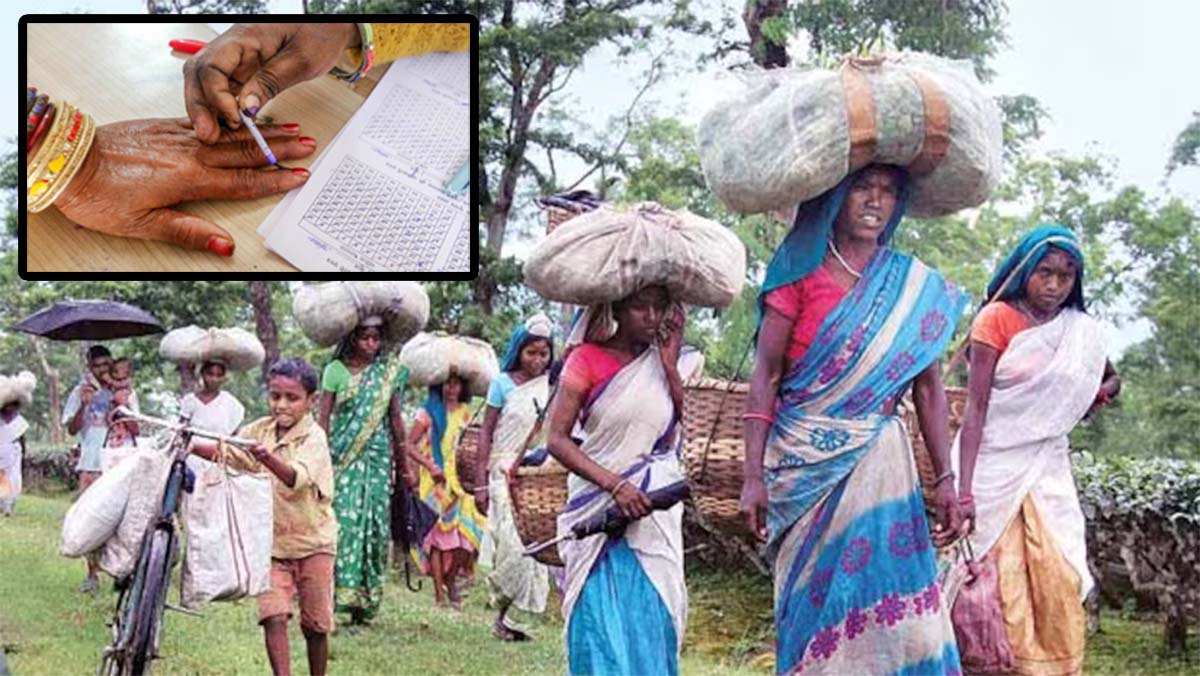As the much awaited Lok Sabha polling dates come closer, a crucial question awaits attention, a question concerning 8.6 % of the country’s population: the question of forest rights and Adivasi livelihood. Previous studies have shown that ignoring forest rights and Adivasi voices can have a significant effect on the election results.
In 2019 Sabrang India reported on an analysis by Community Forest resource-Learning and Advocacy Network before the last Lok Sabha elections, the analysis showed that forest rights made a case for itself as a factor for influencing polls in several constituencies. It reported that there are over 133 constituencies where a campaign for forest rights would have significant influence during the then-upcoming election periods. It seems in 2024 there is further cause for the BJP to be worried about its electoral fate in these constituencies given the number of issues India’s tribal population has suffered with in the recent past.
Out of these, the analysis studied 86 of the 133 constituencies, by dividing these constituencies based on the importance played by forest rights as an issue in three categories – high value, critical value, and good value. Each of these 86 constituencies had witnessed the BJP win by a margin in the 2014 elections. In the critical value areas, a large number of voters belonged to the tribal population residing in forested regions whose lives were thus affected by the Forest Rights Act. Similarly, the ‘good’ areas had fewer tribal residents and less forested land and so forth. Basing its analysis on data from the Election Commission of India, Citizens for Justice and Peace identified some of the key areas which included Bastar, Sarguja and Raigarh in Chhattisgarh; Dindori, Gadchiroli-Chimur, Nandurbar in Maharashtra, Chapatoli, Lohardega in Jharkhand and several others.
So, for instance, if we look at the case of Maharashtra we can see that while several of Maharashtra Scheduled Tribe reserved seats were won by BJP candidates, several of them won by a margin such as Nandurbar, Dindori, with Gadchiroli-Chimur holding a significantly narrow margin between the BJP and the Congress’ candidate, each of which secured 39 % and 42 % of the total votes polled by each candidate in the constituency. Similarly, BJP lost to the Congress party in Chhattisgarh’s Bastar with Deepak Baij as the winner in 2019. Thus, the fact that margin remained low in several of these constituencies is a sign that the BJP’s hold over these regions is present but holds the potential of being shaken.
Forest Rights and its dissidents
About 27 % of India’s significant population, equalling about 200 million, depend on the forest for their livelihood, a significant section of this is the Adivasi population in India. The BJP with its crony capitalism and adherence to saffron hyper nationalism has appeared as unsettling to India’s tribal communities.
For instance, the Scheduled Tribes and Other Traditional Forest Dwellers (Recognition of Forest Rights) Act or what it is more commonly known as, the FOREST RIGHTS ACT has been a historical legislation that is a recognition of rights law that not just grants rights to forest dwellers and Adivasis (tribals) but also grants the Gram Sabha the rights to decision making over any development on Scheduled Lands and Forests. The Right to Forest Produce too –which in effect means the right to production and the market is also a crucial issue. Worldover, and in India, the role of Adivasis and forest dwellers in forest conservation has been recognised.
To try and dilute the rights of Adivasis and Forest Dwellers over their land, an amendment to the Forest Conservation Act was brought in in 2023 by the BJP Government. (FCA-2023). To say that the amendments introduced in a parallel law have invited huge protests is an understatement. It could very well be a factor in contributing to the downfall of the BJP in tribal dominated districts. The amendment witnessed large scale protests across various states.
The Forest (Conservation) Amendment Act, 2023, now known as the Van (Sanrakshan Evam Samvardhan) Adhiniyam was passed by both the Lok Sabha in July and the Rajya Sabha in August, seeks to do away with several of its historical provisions. According to the new law, construction projects for purposes such as national security within 100 km of international borders or the Line of Control will not require forest clearance. The Act is also slated to leave out un-notified forests from under its purview which is catastrophic, because in India, most of the forest land remains un-notified, especially in the north-eastern regions of India. The forests remain a crucial issue for India’s tribal communities; their survival depends on it.
Related:
Forest (Conservation) Amendment Bill: North-east to bear the brunt
Adivasi struggle led by trailblazers working on-ground: Teesta Setalvad
Jharkhand tribal activists agitating for a separate Sarna Code, arrested ahead of PM Modi’s visit
How a battle is being waged within India’s forests, for rights over land and resources
Parliamentary Committee Gives Nod to Proposed Dilution of Forest Rights

